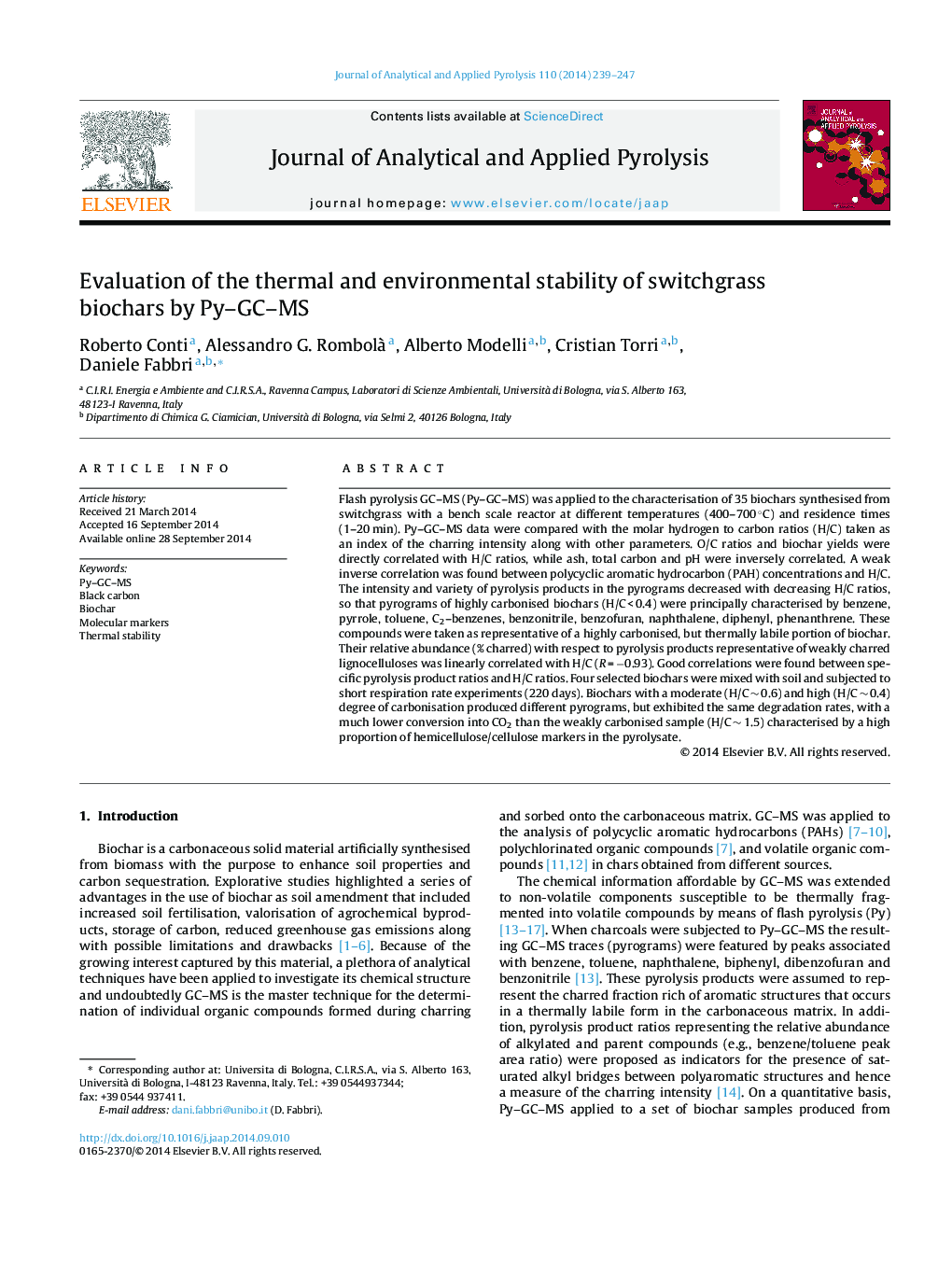| Article ID | Journal | Published Year | Pages | File Type |
|---|---|---|---|---|
| 1197311 | Journal of Analytical and Applied Pyrolysis | 2014 | 9 Pages |
•Py–GC–MS of 35 biochars from 400 to 700 °C 1–20 min switchgrass pyrolysis.•Dimethylfuran, benzofuran, C2–benzene/naphthalene ratios strongly correlated with H/C.•Holocellulose markers detected in 0.8 < H/C < 1.5 highly degradable biochars.•Lignin markers detected in 0.4 < H/C < 0.8 similarly recalcitrant biochars.•Weak pyrograms from H/C < 0.3 biochars.
Flash pyrolysis GC–MS (Py–GC–MS) was applied to the characterisation of 35 biochars synthesised from switchgrass with a bench scale reactor at different temperatures (400–700 °C) and residence times (1–20 min). Py–GC–MS data were compared with the molar hydrogen to carbon ratios (H/C) taken as an index of the charring intensity along with other parameters. O/C ratios and biochar yields were directly correlated with H/C ratios, while ash, total carbon and pH were inversely correlated. A weak inverse correlation was found between polycyclic aromatic hydrocarbon (PAH) concentrations and H/C. The intensity and variety of pyrolysis products in the pyrograms decreased with decreasing H/C ratios, so that pyrograms of highly carbonised biochars (H/C < 0.4) were principally characterised by benzene, pyrrole, toluene, C2–benzenes, benzonitrile, benzofuran, naphthalene, diphenyl, phenanthrene. These compounds were taken as representative of a highly carbonised, but thermally labile portion of biochar. Their relative abundance (% charred) with respect to pyrolysis products representative of weakly charred lignocelluloses was linearly correlated with H/C (R = −0.93). Good correlations were found between specific pyrolysis product ratios and H/C ratios. Four selected biochars were mixed with soil and subjected to short respiration rate experiments (220 days). Biochars with a moderate (H/C ∼ 0.6) and high (H/C ∼ 0.4) degree of carbonisation produced different pyrograms, but exhibited the same degradation rates, with a much lower conversion into CO2 than the weakly carbonised sample (H/C ∼ 1.5) characterised by a high proportion of hemicellulose/cellulose markers in the pyrolysate.
